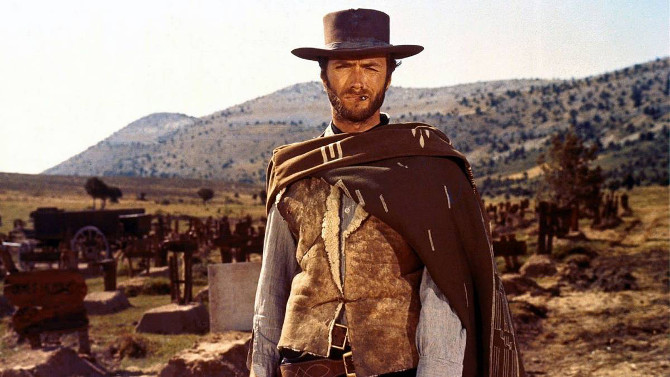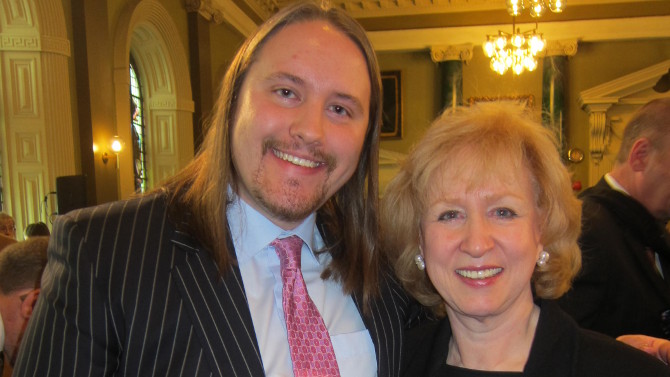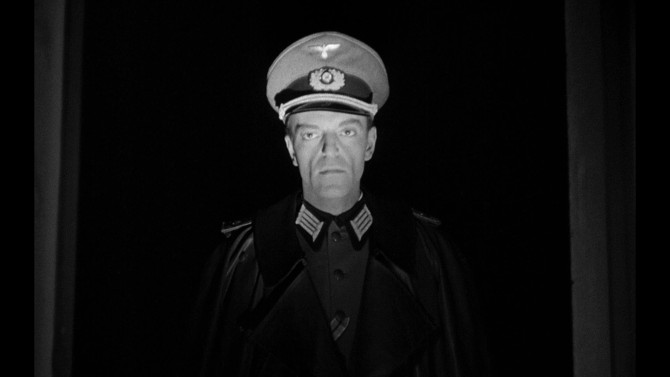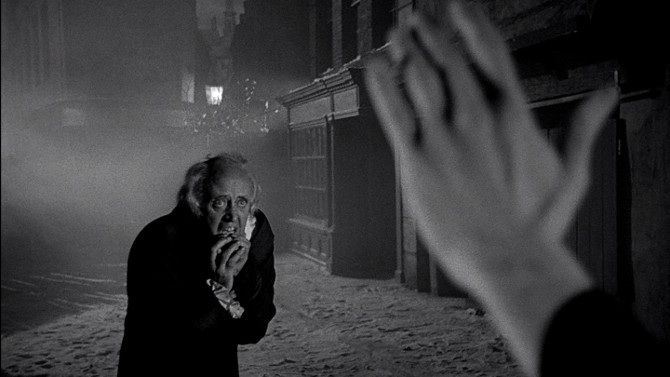
Going Rogue
The first stand-alone film in the Star Wars universe, Rogue One bridges the gap between episodes 3 (2005's Revenge of the Sith) and 4 (the original 1977 motion picture); it is also a movie that lives in the grey zone more than any other in the operatic space saga – depicting the complexity of the actions executed by the Rebel forces that are our protagonists. What we see is a complicated universe filled with spies, traitors and extremists – a place where no decision is an easy one. Our lead character, Jyn Erso (Felicity Jones), is a perfect example of this, for when she was young, her father, Galen (Mads Mikkelsen), a weapons developer, was forcibly taken by Imperial baddie Orson Krennic (Ben Mendelsohn) to finish work on the Death Star (the planet killer from A New Hope). This leaves the impressionable girl in the hands of a radical, ultra dangerous Rebel fighter by the name of Saw Gerrera (Forest Whitaker), who deserts her at the age of sixteen.

The Man with No Name
Perhaps one of the most iconic introductions to a character finds Clint Eastwood’s Man with No Name riding into a dry, vile town, wearing the now legendary garb – dust covered poncho, brown gaucho-style hat, black jeans, spurs, and a Colt in his trusty holster (the stubby cigars will come a little later). Stopping for a drink of water, he takes in the violent, melancholic locale, where people gaze at him in a distrusting and ominous way through their wooden shutters, and children are shot at in the street by thuggish individuals. The first of what would become the "Dollars Trilogy" (or "The Man with No Name Trilogy"), A Fistful of Dollars, despite its now celebrated status, was poorly received by most North American and British critics when originally released. Once again showing how time is a fickle thing, the term Spaghetti Western (this type of motion picture), was first coined as a negative, disparaging term (ridiculing the European product for being of poorer quality to their American counterparts) – though today, it is generally thought of as an endearing and highly positive term. Directed by Sergio Leone, its unique visual style (beautifully framed close-ups that differ from the typical Hollywood use of the technique, as well as his then unorthodox use of viewpoint that places us in the moment over Eastwood’s gun), and attempt to move away from the traditional American tropes of the western, is now viewed as the beginning of the rejuvenation of the historic genre.

War and Peace, Gibson Style
Juxtaposing the horrors of war around a message of peace, Mel Gibson’s 2016 offering, Hacksaw Ridge, is a rivetting piece of film making, capturing a touching love story, a complex family dynamic and harrowing battle sequences, giving us a rich, multi-faceted tapestry. Providing us with an effective window into the upbringing of our main character, Desmond Doss (Andrew Garfield), Gibson is easily able to make us bond with our lead. Each aspect of the first third of the movie, where we see this boy grow into a young adult, is perfectly chosen, as it renders us with a vision of exactly who he is as a human being. Son to a kind mother, Bertha (Rachel Griffiths), and a complicated, abusive father, Tom (Hugo Weaving), who is struggling with demons from his time spent in the military during World War I, he also has a brother nicknamed Hal (Nathaniel Buzolic). Nearly killing his brother after a tussle at a young age, Desmond becomes focussed on the Sixth Commandment: thou shalt not kill.
Star Pick with Kim Campbell

A little while ago, I was fortunate enough to be able to interview The Right Honourable Kim Campbell, the 19th Prime Minister of Canada (and to date, the only female to land the top job), about her favourite film. Transporting me to ‘the most wonderful time of the year’, she illuminated me as to her Christmas program watching traditions. She explained that, each time December comes around, she makes time to gather round the television with her entire family and watch, back to back, The Muppet Christmas Carol starring Michael Caine, followed by the classic 1951 version of A Christmas Carol, with Alastair Sim taking on the legendary role of Ebenezer Scrooge. She lit up talking about her family custom, clearly cherishing the memories made by gathering the family to watch these two festive films. As I am only able to review one film as part of the Star Picks section, I will be looking at the 1951 incarnation of the Charles Dickens’ tale. Make sure to track down the Muppet version as well to get the full Prime Ministerial experience. Arguably the most iconic version of the miser, Alastair Sim has been etched in the collective psyche as the perfect Scrooge. With his receding hairline, bulbous eyes and curmudgeonly attitude, it is easy to buy him as a true hater of all things Christmas.

Perrier a Worthwhile Bounty for Audiences
Narrated by the Grim Reaper (Gabriel Byrne), 2009's Perrier’s Bounty is an intriguing Irish film that mixes action and comedy within a crime story (all centred around a complex father/son relationship). Written by Mark O’Rowe (who also scribed the entertaining 2003 flick Intermission) and directed by Ian Fitzgibbon, they thrust us into the life of protagonist Michael McCrea (Cilian Murphy), a flawed, complicated figure who just happens to be sleeping in the afternoon while two thugs, Ivan (Michael McElhatton – Roose Bolton in Game of Thrones) and Orlando (Don Wycherley), sit on his couch eating his pistachios. Henchmen to a dangerous gangster, Darren Perrier (Brendan Gleeson), the duo remind the recently woken man that he owes the crime boss a hefty sum that must be paid in four short hours. Surrounded by an ever-complicated life, his female best friend Brenda (Jodie Whittaker), who lives one floor down, is struggling with her longtime boyfriend Shamie (Pádraic Delaney), while his father Jim (Jim Broadbent) arrives out of the blue and states that he is dying of cancer – the two have not spoken in some four years. Pushing them to the periphery while he deals with the more pressing problem of Perrier, he reaches out to a local drug dealer, Clifford (Domhnall Gleeson), as the man knows every low life in the city of Dublin. Getting directions to The Mull (Liam Cunningham – Davos Seaworth in Game of Thrones), a loan shark, he petitions him for some cash. Having none of it, instead, The Mull invites him to partake in a criminal venture with his buddy Dinny (Breffni McKenna), and Michael, desperate for any solution, agrees.

The Sound of Silence
Made with a surprisingly nuanced touch and a quiet grace by a first time filmmaker, Jean-Pierre Melville’s (Le Samouraï) 1949 drama Le Silence de la Mer is a philosophical study in how the lives of two individuals are affected when an occupying German soldier billets at their house, and, in turn, how living in their home changes him during World War II. Based upon Jean Bruller’s novel of the same name (which he published under the nom de plume Vercors), it became a symbol of resistance against the Nazi occupation of France (Melville himself was a part of the French Resistance, as was Bruller). As an interesting sidenote, Bruller discovered that Melville was planning on making the movie without the rights to his work. Meeting up with the filmmaker, he threatened to burn the negative if he did not like it, yet he allowed him to make the movie in his own home just outside of Paris. The pact was that Bruller would show his version to 24 former Resistance members and that they would have to unanimously give it their blessing (or Melville would burn the negative in front of the author). 23 of 24 voted in favour, the sole individual to go against the crowd did so not because he disagreed with the content of the film, but rather, how he found himself as part of the panel (as a last minute substitute – which offended him). Melville won out and Le Silence de la Mer became a huge hit in France.

